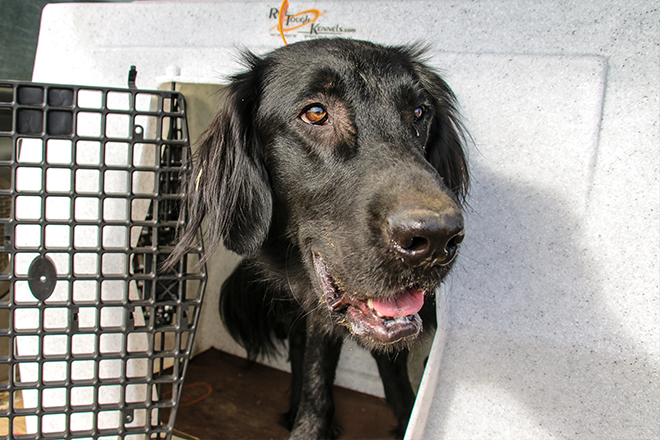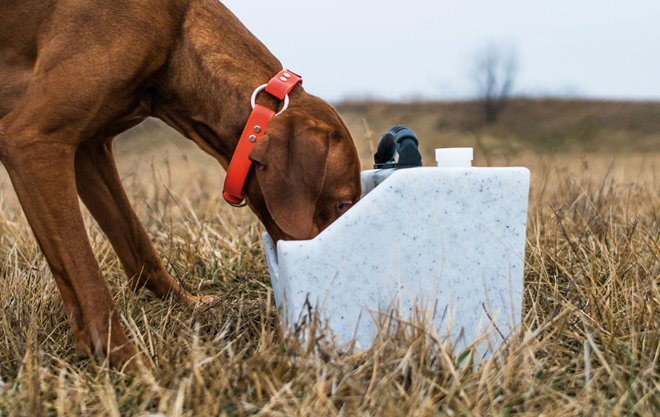10 ways to make your bird dog more comfortable, safe and productive on your next upland adventure
When traveling with bird dogs, proper preparation on your part produces the best performance from your dog when you arrive at your destination.
You may think your dog is resting while you travel. But traveling stresses his body in ways you may not realize. Many veterinarians will tell you that travel time is not the same as rest time, and that dogs don’t rest well when the vehicle is moving.
With help from Pheasants Forever national sponsor
Ruff Land Kennels, we put together 10 ways to make travel time less stressful on your dog … and get more good hunting time together in the field.
1 Make Time for Pit Stops
Plan for frequent stops along the way to allow dogs to air and stretch. Stop every three hours, and even more frequently if you are traveling with a puppy. Make sure your dog is on a lead and under control. Water should be offered at each stop.
2 Get Pup Comfortable
Before you travel with your dog, acclimated her to the crate, dog truck or trailer. Dogs should travel in a special crate or kennel. They should never travel unrestrained in the bed of a truck. Sudden stops or sharp turns of the wheel may cause your dog to slide around, even out of the vehicle, and potentially become injured.
3 Have A Clear View
Make sure when hauling a dog box or trailer behind your truck that it is clearly visible from behind. These carriers tend to be lower than a truck, and people who are coming up behind you might not see them. Check to be sure your taillights, tires and hitches are in working order.
4 Use a Right Sized Kennel
Make sure the kennel your dog is traveling in is large enough that she can lie down and stretch lengthwise comfortably, but not overly big. To feel comfortable while the vehicle is moving, dogs need to brace themselves. If your dogs can’t brace themselves when they’re lying down in the box by pushing their paws against the side, they may stand up to do so, which puts them at a greater risk of injury.

5 Add a Cushion
You should make sure your dog’s travel kennel has a cushion on the bottom, rather than a hard surface. Manmade bedding materials or natural materials, such as cedar shavings, straw or hay, can be used. What you choose depends on your dog. Reynolds cautions against using cloth bedding because it can be harmful if ingested.
6 Make the Air Flow
Proper ventilation also is key. You should be able to adjust the amount of air flowing around your dog to allow for more air flow in warmer temperatures and restricted air flow in cold weather. Do not close any vents all the way, even in cold temperatures, as this can result in a lack of oxygen. You also should monitor the temperature in the kennel or crate with a remote thermometer.
7 Keep it Clean
When cleaning your dog’s container, use a mild antibacterial cleaner without a strong odor. This is important for bird dogs that rely so much on their sense of smell.

8 Water Them Often
Keep your dog hydrated with frequent stops for water … and peeing. See tip number one: Do not go more than three hours without a stop-and-stretch-and-drink. Ruff Land's Water Hole, a dog bowl and water container in one (shown above), is perfect for travel and, once you get there, for the hunt itself.
9 Make Some Leeway
Arrive at your destination early to give your dog and yourself time to rest before you head out to the field. Don’t travel a long distance and then ask your dog to immediately go to work.
10 Secure a Veterinarian
Make certain your dog is current on vaccinations and that you bring a printed record of these vaccines. Identify a good veterinarian in the area, contact them beforehand, and put his or her phone number, and the practice’s emergency number, on quick-dial in your phone.
With proper planning, traveling can be less stressful and more enjoyable for both you and your dog … and you’ll team up better to find more birds.